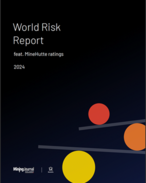Sweetheart, a 5.1m male saltwater croc, had the terrifying trait of protecting his territory against fishing dinghies by attacking their outboard motors.
He is blamed for at least twice tipping fishermen from their boats at Sweets Waterhole on the Finniss River before his death in 1979.
He was captured before a major fishing competition in the Finniss River but drowned in the attempt to hoist his 780kg bulk from the water.
Scientists from the Australian Nuclear Science and Technology Organisation (ANSTO) based at Lucas Heights in Sydney are using bone samples taken from Sweetheart's preserved body - now the most popular exhibit at the Northern Territory Museum and Art Gallery here - to gauge the extent of heavy metals contamination from the now defunct Rum Jungle uranium mine.
Sweetheart, who was estimated to be between 50 and 90 years old when he died, almost certainly lived in the same waterhole downstream from Rum Jungle when the mine operated between 1954 and 1964, the museum's assistant director of natural sciences Barry Russell said.
"Sweetheart lived in an aquatic medium that was undoubtedly contaminated with heavy metals including copper, manganese and zinc and was also eating other aquatic animals containing these contaminants," Dr Russell told AAP today.
He doubted the heavy metal contamination could explain Sweetheart's unique and unnerving behaviour towards outboard motors.
"That would be drawing a long bow to say it was a direct effect of heavy metals," Russell said.
"There were certainly other crocodiles similarly exposed to heavy metals in the area at the time that did not behave in this way."
ANSTO's environmental radioactivity group principal research scientist Ross Jeffree said Sweetheart captured a period of environmental contamination for which scientists had no other water chemistry information.
"There is potential there for this animal to be an environmental archive of pollution history," Jeffree told reporters.
|
Brought to you by AAP
|
Disclaimer and CopyrightAAP Copyright © 2000
|























